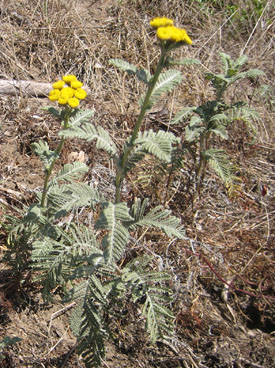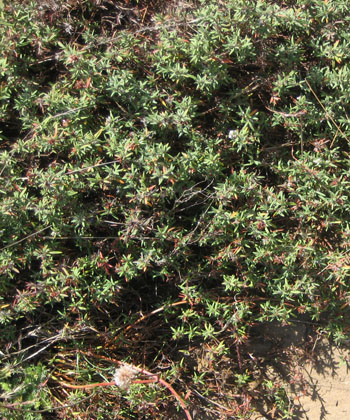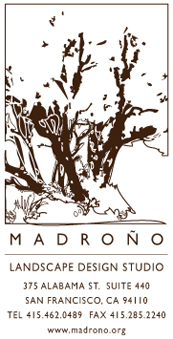 Water and sand straddle the symbolic spectrum of living: while the former is biologically essential, the latter evokes the lifeless dunes of the desert. Yet here in San Francisco, where dunes define our geology and "normal" is anything but, the sandy banks of our largest lake sustain a population of drought-tolerant dune plants that belie the dominant paradigm. Such a flourishing of life under inauspicious circumstances distinguishes our local flora.
Water and sand straddle the symbolic spectrum of living: while the former is biologically essential, the latter evokes the lifeless dunes of the desert. Yet here in San Francisco, where dunes define our geology and "normal" is anything but, the sandy banks of our largest lake sustain a population of drought-tolerant dune plants that belie the dominant paradigm. Such a flourishing of life under inauspicious circumstances distinguishes our local flora.
Our subject is Lake Merced, where today the trappings of modern recreation capture the bulk of public attention. Duffers flock to the Harding Park and Jack Fleming golf courses on the eastern flank, where grassy fairways and manicured greens attest to the power of irrigation; fishermen angle from designated piers for stocked trout in depths that have mercifully risen from their recent historic lows; and bikers and joggers ply the paved roadways that girdle the shifting shores. As in so many other natural areas within the urban setting, exotic invasive plants have followed close behind human activity: stubborn iceplant (Carpobrotus edulis) blankets many exposed banks, while meddlesome cape ivy (Delairea odorata) scrambles from dense thickets up into the bark-shedding heights of ubiquitous Eucalyptus and fast-growing stands of Monterey pine.
Nevertheless, elements of the original flora still survive here, thanks in large part to volunteer groups like the Friends of Lake Merced and city organizations like the Natural Areas Program. The best spot to admire their work is at the Mesa, a peninsula on the northern shore of the east lake (across Lake Merced Blvd. from the Lakeshore Elementary School), where a restoration task force has removed the monocultural iceplant and helped to swing the natural balance back toward the diversity of native plants that truly belong here.
A sandy footpath skirts piles of uprooted, decomposing iceplant, and leads into a rich dune-scrub plant community that upholds the legacy of our past. The prostrate form of coyote brush (Baccharis pilularis), a dense evergreen shrub reaching 1-2 feet in height, anchors the landscape. This particular population blooms earlier than its statewide brethren, which tends to flower in late fall, so August finds the coyote brush of Lake Merced covered in the curious whitish-yellow fuzz that serves to underscore its common name. These furry-looking blossoms may not rank among the world's most attractive, but they sustain more than 600 species of beneficial insects and the birds that feed on them, thus rendering coyote brush among the most important wildlife plants we know.
Scattered among the coyote brush grow other common dune residents like coastal sagewort (Artemisia pycnocephala), a 1- to 2-foot perennial whose aromatic silvery-grey foliage resembles the soft plumage of an ostrich, and yellow bush lupine (Lupinus arboreus), a woody shrub to five feet with delicate silver palmate leaves and a golden pea-flower in spring. More striking is Hooker's evening primrose (Oenethera elata spp. hookeri), a rampant biennial that produces 6- to 8-foot flower spikes covered in yellow blossoms throughout the summer; this plant reproduces easily and prodigiously from seed, and thus can be invasive in the garden, but landscapers prize it for rapid bank-stabilization and erosion control. Another vigorous August bloomer is gum plant (Grindelia stricta), so-called for the sticky white gum that exudes from the flower buds just before they open. This low-growing perennial brightens the dunes with persistent yellow blossoms; home gardeners value this plant for its uncanny ability to thrive under conditions of benign neglect.
 One of the most easily overlooked and under-appreciated plants growing here is dune knotweed (Polygonum paronychia), a subshrub with rosemary-like leaves and a fuzzy white-to-pinkish flower, which creeps across the sand with rapidly multiplying tendrils to form a tight, ground-hugging mat. An excellent bee plant, it ranks among the great unhailed heroes of the Franciscan flora, and should be considered for service as a faithful groundcover in Bay Area gardens. The generic name comes from the Greek for "many knees," an evocative description of its scrambling habit.
One of the most easily overlooked and under-appreciated plants growing here is dune knotweed (Polygonum paronychia), a subshrub with rosemary-like leaves and a fuzzy white-to-pinkish flower, which creeps across the sand with rapidly multiplying tendrils to form a tight, ground-hugging mat. An excellent bee plant, it ranks among the great unhailed heroes of the Franciscan flora, and should be considered for service as a faithful groundcover in Bay Area gardens. The generic name comes from the Greek for "many knees," an evocative description of its scrambling habit.
Preservationists will be pleased to see flourishing stands of dune tansy (Tanacetum camphoratum), a once-common plant now under threat from the widespread loss of its only habitat, the coastal dune. This stout perennial grows 1-2 feet tall from a creeping rhizome, with fragrant, feathery fern-like leaves of silver on stems topped with tight disc flowers like bright buttons of gold. The genus takes its name from the Latin for "immortality," making this specimen a likely candidate for poster child in the struggle against native plant extinction.
The road to potential annihilation was cleared in the late 18th century under imperial Spain. Back then, this was called La Laguna de Nuestra Señora de la Merced, or The Little Lake of Our Lady of Mercy, so dubbed by Father Francisco Palou in 1775 for the day of the religious calendar upon which he visited the area. It had been inhabited for thousands of years by the Ramaytush Ohlone, but the colonial powers deemed this land worthless, as it offered no trees for lumber, so they bundled the Ohlone off to the missions and assigned this lakeside region of low-growing dune plants as community property for the grazing of cattle.
Spain eventually yielded to Mexico, which succumbed to the United States, and the march of progress has rarely looked back. Lake Merced rendered important early service as a source of fresh water for the burgeoning city (it is still designated an "emergency reservoir" today). In 1900, farms still outnumbered houses here, but the 20th century saw heightened involvement by the military, who built numerous batteries along the western berms, and urban planners, who strove to accommodate rapid population growth. Along with housing came recreational and educational facilities: golf courses, the rod and gun club, a police firing range, the San Francisco zoo, and SF State University, for example. Given this centuries-long dash toward development, we could very well regard any remaining natural life as some divine gesture of mercy.
The English word "mercy" and the Spanish word "merced" share a common root, the classical Latin "merces," which originally meant "reward" or "fee." As the Roman empire gave way to Christianity, this word evolved to mean the specific reward in heaven which is earned by granting kindness to those who have no claim, and from whom requital can not be expected. Another linguistic branch from the same stem gave us the French for "thank you," merci.
How does a plant give thanks? What repayment can we expect from a flower? Here on the sandy shores of an aptly named lake, we find that the ineffable pleasures of compassion can provide their own exquisite rewards.
* * *
Madroño founder Geoffrey Coffey runs the education department of Native Spaces, a San Francisco non-profit that promotes the use of California native plants in the built landscape. He is a principal of Bay Natives nursery and a freelance writer for the San Francisco Chronicle.

